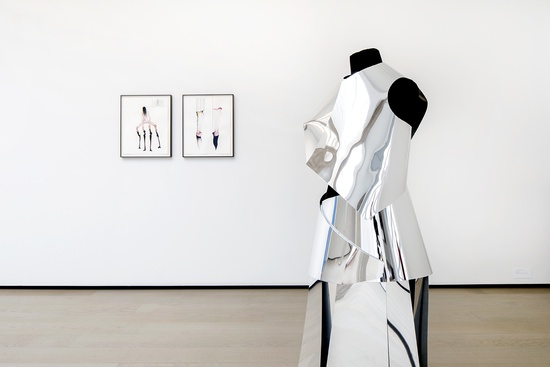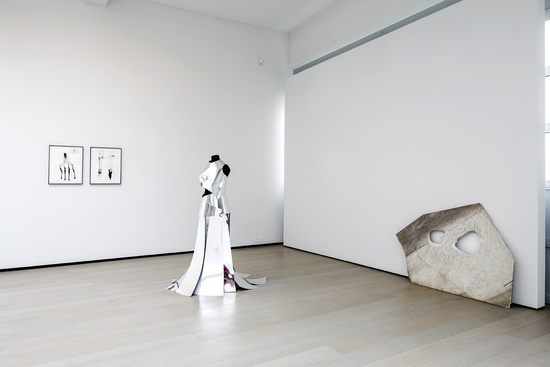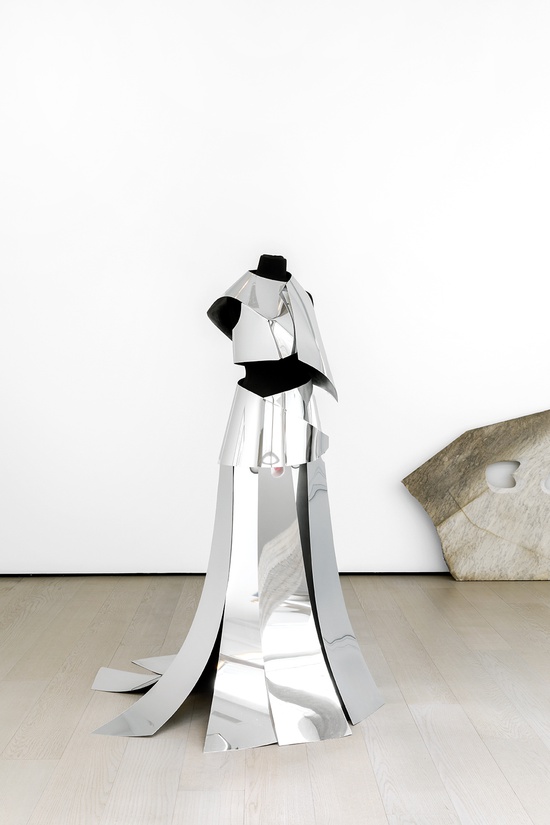Mirror Dress, 2016
Grace Schwindt
(2016)
The sculpture Mirror Dress, which is also a costume from a performance by Schwindt with the same name, is also about the vulnerable human body. The sculpture and performance are based on the Aria of Madness in the 19th century opera Lucia di Lammermoor by Gaetano Donizetti. In this opera, the main character Lucia murders her husband-to-be. She was forced to get married to him for political reasons. This murder is presented in the opera as an act driven by madness. This work by Schwindt is a protest against the traditional patriarchal outlook on femininity, in which madness is seen as the motive for murder rather than the wish to be liberated from this oppressive situation. She criticises the classical image of the hysterical woman (a figure that is frequently used in literature and opera).
The choice of material in Madness and Other Tales, mirrors, is certainly no coincidence. Mirrors are sharp and hard, as opposed to the soft and vulnerable human body. In addition, the mirrors refer to the ‘mirror stage’ in child development. According to Lacan’s psychoanalysis this is the stage when the child overcomes the stage of fragmentation and powerlessness. The image of the dress reflected in the mirror also confronts the visitor. How about the vulnerability of our own body? How often are we exposed to uncertainties? Do we owe it to ourselves to try and overcome our feeling of powerlessness? Does Schwindt urge the visitor to become stronger or does she perhaps want to show us the beauty of the vulnerable body?




